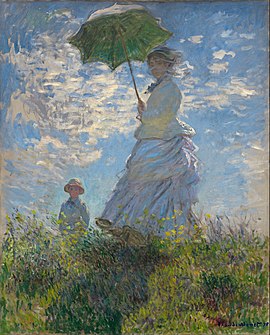Woman with a Parasol – Madame Monet and Her Son, 1875 by Claude Monet,
National Gallery of Art, Washington DC
This project is an ETL pipeline that ingests data on museums, artists, and their paintings into a data warehouse in Postgres. The intent here is building the data models and the ETL process from scratch, understanding these concepts by limiting the use of more sophisticated tools. It has the following features:
- Establishes an ETL process with Python using SQLAlchemy and Pandas
- Creates a data warehouse with a staging and presentation area using Postgres as the storage solution
- Validates every deployed table in the data warehouse with a comprehensive test suite
Below is a diagram that overviews the entire process.
Note: For more on data modeling and data quality, check out the docs.
This project requires Python: I used version 3.11.
Clone this repo. Then you can install the required Python dependencies via:
make init
To install the database either:
- Install PostgreSQL and pgAdmin 4 locally; or
- Install Docker.
Download the data and extract the csvs to the data folder.
How the database is setup depends on if you installed PostgreSQL and pgAdmin locally or are using Docker.
Usually the default user is postgres and the password is normally configured when installing PostgreSQL, but you can always change it.
Inside the pipelines/config.json file, set the following values:
"user": "your_default_postgres_username",
"password": "your_default_postgres_password",
"host": "localhost",
"port": 5432
Open pgAdmin and make a new server, filling in the following areas:
Host name/address: localhost
Port: 5432
Username: your_default_postgres_username
Password: your_default_postgres_password
To create a database, first connect to the default postgres database with the default user. Then run the following query:
CREATE DATABASE paintings;
A paintings database should appear under the Databases drop down menu.
Spin up the Docker containers via
docker compose up
Open up the compose.yml file for reference.
Inside the pipelines/config.json file, set the following values:
"user": POSTGRES_USER, # from compose.yml
"password": POSTGRES_PASSWORD, # from compose.yml
"host": "localhost",
"port": 5433
Go to localhost:5050 in your browser directs and login using PGADMIN_DEFAULT_EMAIL and PGADMIN_DEFAULT_PASSWORD.
Make a new server with the following values:
Host name/address: db
Port: 5432
Username: POSTGRES_USER
Password: POSTGRES_PASSWORD
A paintings database should already be listed under Databases.
To shut down the containers, use:
docker compose down
You can deploy the tables using
make all
You should see these tables now in the paintings database: check it out through pgAdmin.
Then you can validate the tables with
make test
and see all the tests results in the console.
The data was sourced from Kaggle.
This project is under the MIT license (see LICENSE)

